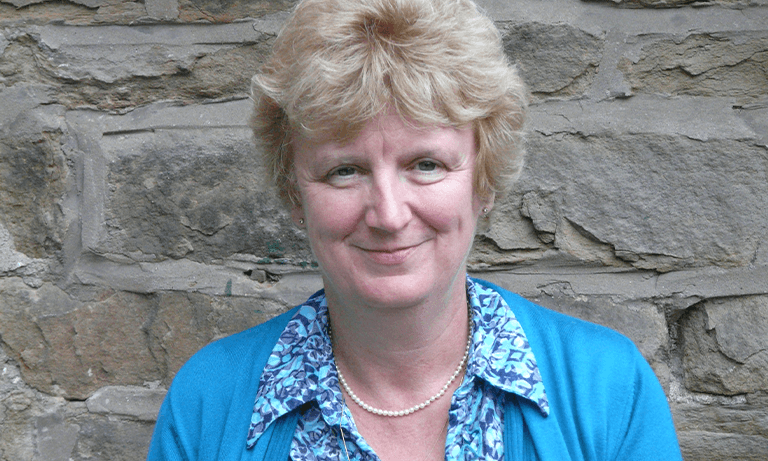Standing up for the veterinary profession
08 Aug 2024
07 Dec 2020 | Pam Mosedale
Pam Mosedale, former Lead Assessor for the RCVS Practice Standards Scheme, reflects on the hundreds of varied veterinary workplaces she has visited, and why quality improvement is important for creating a positive workplace culture.

I have loved being a Practice Standards Assessor. Friends think I must be a bit odd - they imagine me carrying a clipboard around and tutting at the practice's lack of a written scheme of examination for their autoclave! What they don’t realise is that I have been privileged to meet inspiring veterinary teams all over the UK.
Most vets and nurses work in 3 or 4 practices throughout their career, locums visit many more, but PSS assessors have the opportunity to visit a rich variety of veterinary workplaces.
For all those workplaces, from tiny consulting branches to universities, within the first half an hour of arriving at the practice I would get a “feeling”, good or bad, about the workplace. This was nothing to do with how new and shiny the premises were, like the Queen PSS Assessors are often greeted by the smell of fresh paint! It was the way team members spoke to each other, and the pride they had in their practice. I think that feeling is an expression of how the practice culture comes over to an outside observer.
Reflecting on that, I realise that the practices who gave us a good feeling were the ones who wanted to learn from the process and improve. It didn’t matter if they were Core Standards consulting only branches in Northern Ireland or Equine Hospitals in the south of England. They all had team members keen to learn and to find out what their particular practice could do better.
This got me thinking how workplaces that engage in Quality Improvement activities can use these tools to help maintain a safe learning culture.
Quality Improvement in veterinary practice might be a new term, but it’s something we in the vet world have always been doing. It is the combined efforts of the whole team to make changes that will lead to better outcomes, better systems and better professional development and learning. This can apply to all workplaces, not just clinical practice.
Teams that communicate regularly and where everyone’s voice is listened to have better morale. They can often avoid errors by team members speaking up about potential problems and near misses before they can escalate.
Teams that measure what they do and how effective it is, using clinical audit, can then consult with team members and make changes in order to improve outcomes, then repeat the audit to assess what differences the changes have made. Like the equine practice manager who audited how often consent was being obtained for Cascade medicines, found not a very positive result, and realised that making it easier by marking packs of Cascade medicines with stickers and providing forms in all vets vehicles led to a big improvement on re-audit. Or the RVN educator, who audited accidents in lab practicals, leading to protocols being drawn up on sharps handling for students.
Teams that look at evidence and involve team members in drawing up guidelines, can use these along with clinical expertise, and the needs of the particular patient and client to help their vets and nurses to make good decisions. Like the small animal team in the north east who involved all the vets, from new graduates to old timers like me, meaning they were able to explain how they had contributed to the guidelines that they used every day.
Systems of work, like checklists for surgical procedures or case handovers, can reduce the incidence of errors, protecting not only patients but also team members from the stress of dealing with complaints. Checklists are not just a piece of paper with vital steps – surgical safety checklists can also encourage communication and teamwork. A farm vet explained to me that they were also useful for vets working singly in the field, particularly instrument counts, and proudly showed me their laminated, cow-muck-proof version!
When errors occur, teams that look at what happened in detail with a view to improving systems rather than blaming individuals can learn from the whole experience, moving forward together and improving team morale. Like the boarding kennels that explained to me how an escaped patient had led to a significant event audit where the root causes were explored by the team. As a result, new protocols were put in place and a physical system (a siren which sounds if both doors are opened at once) was installed. Where errors are explored with a view to changing systems instead of blaming individuals, real learning can occur.
Quality Improvement can help create and foster a learning culture. RCVS Knowledge has free QI tools to assist with putting all this into practice.
In my experience if teams are given the opportunity to embrace Quality Improvement, and if everyone’s voice is heard and opinions considered in a flattened hierarchy, it can lead to happier and more productive workplaces, and their next PSS assessor or visitor will get the “good feeling” too.
Get tailored news in your inbox and online, plus access to our journals, resources and support services, join the BVA.
Join Us Today